Best Time to Visit Chitwan National Park
Chitwan National Park boasts diverse wildlife, It's ecosystem is pure and pristine and its lushness is captivating.
Chitwan National Park boasts diverse wildlife, It's ecosystem is pure and pristine and its lushness is captivating.
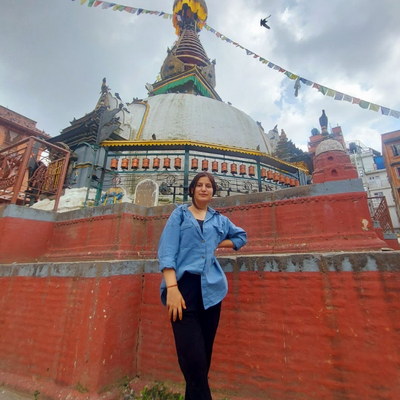
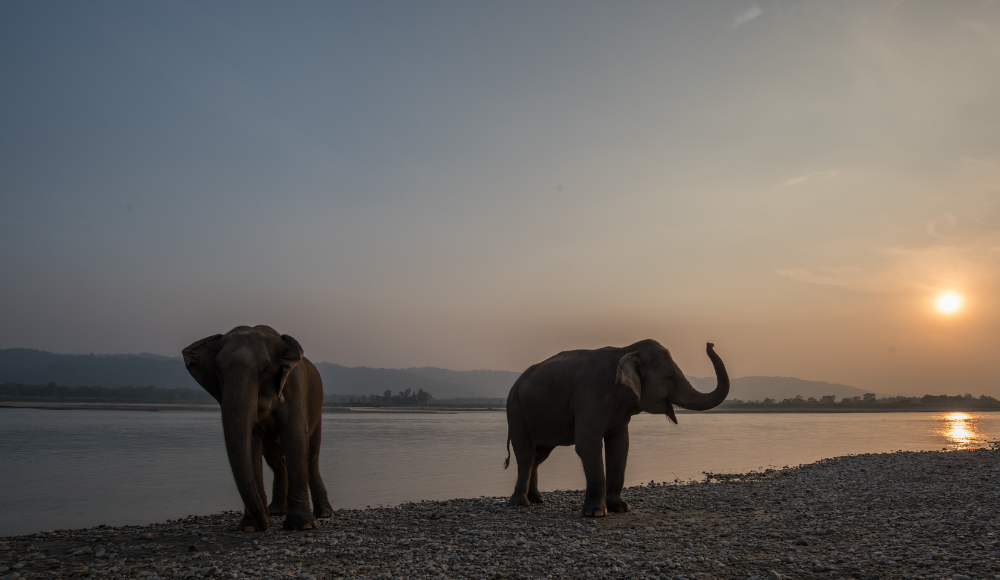
A perfect example of a balanced ecosystem on the platter of ongoing biological evolution is the infamous Chitwan national park. Every year this national park receives thousands of visitors. Though the visit to this national park can be done year around, Late September to early December and March to April are the best time to explore this national park. Both the weather, and the surrounding are perfect during these periods providing outstanding visibility with adequate wildlife availability.
Late September to early December, is the blessed time to get around this national park. The environment practically blooms in this time granting an unobscured view of all the preserved biodiversity along with the scattered geography. All the floras and faunas are most visible at this time, and this is undoubtedly the perfect shot for national park visitors.
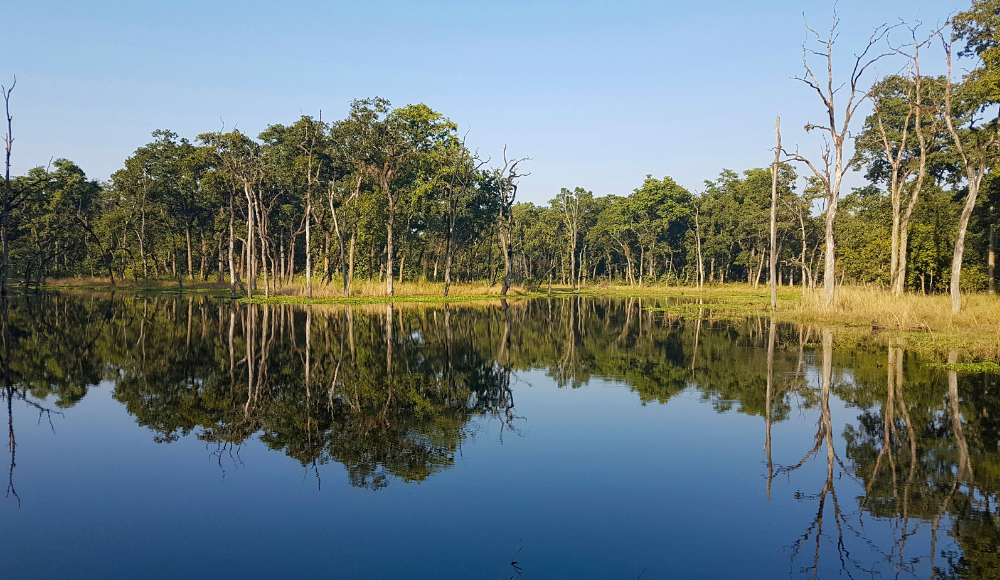
Likewise, March to April is another graceful period for your tour around the national park. This period moreover falls under the hot humid season category, but you can spot all the wildlife residing in this national park in this particular season. You have to tolerate some nerve-wracking heat during these periods. But all your struggles will be washed away after you run across the wild beasts on the scenic lap of the majestic Chitwan national park. As there is an old saying, “To gain something, you should lose something”, you have to tolerate this immense heat for the entire wildlife encounter.
Chitwan national park is the first wildlife sanctuary gazetted as the national park of Nepal. Not only this, but it is also one of the national parks to be enlisted in the world heritage site. So, you may have pinpointed its importance and significance. It is highly preserved and protected from human encroachment. Also, It is well known as a national park with a vast number of preserved biodiversity. Altogether 68 species of mammals, 544 species of birds, 56 species of herpetofauna, and 126 species of fish are conserved in this national park.
More than 70% of this national park is occupied by the Sal forests, and the rest by the riverine, grassland, and alluvial floodplain. Because of this perfect clash of floral diversity with the natural topography, this national park is a much more accurate and absolute habitat for several wild beings. If you have your enthusiasm geared up for this national park visit, this piece of work harmonises with your soulful taste. Go through the following details to know all possible seasonal visits to this divergent national park.
|
National Park |
Chitwan national park |
|
Established Year |
1973 |
|
Declared as World Heritage Site |
1984 |
|
Location |
Southern central terai (distributed over Nawalparasi, Parsa, Chitwan and Makwanpur districts) of Nepal. |
|
Area Occupied |
952.63 sq km |
|
Buffer Zone |
766.1 sq km |
|
Park Headquarter |
Kasara |
|
Climate |
Humid subtropical monsoon climate |
|
Available Fauna and Species |
|
|
Endangered Animals |
|
|
Best Time to Visit |
Autumn (September to early December) Spring (March to May) |
Chitwan national park lies in the southern central terai of Nepal. It is collectively distributed over four districts, Nawalaparasi, Chitwan, Parsa and Makwanpur. It encompasses an area of 952.63 sq with a buffer zone of 766.1sq km involving a Ramsar site in its periphery. This national park settles in between two great rivers Narayani and Rapti on the north and west at the base of Siwalik hills.
Chitwan national park adjoins the Parsa national park in the east. Towards its south there lies the tiger conservation area of India, Balmiki national park. This national park shares some of its territory with Balmiki national park and Parsa National Park for tiger conservation units. The park's headquarters is in Kasara. And this national park is the most visited national park in Nepal.
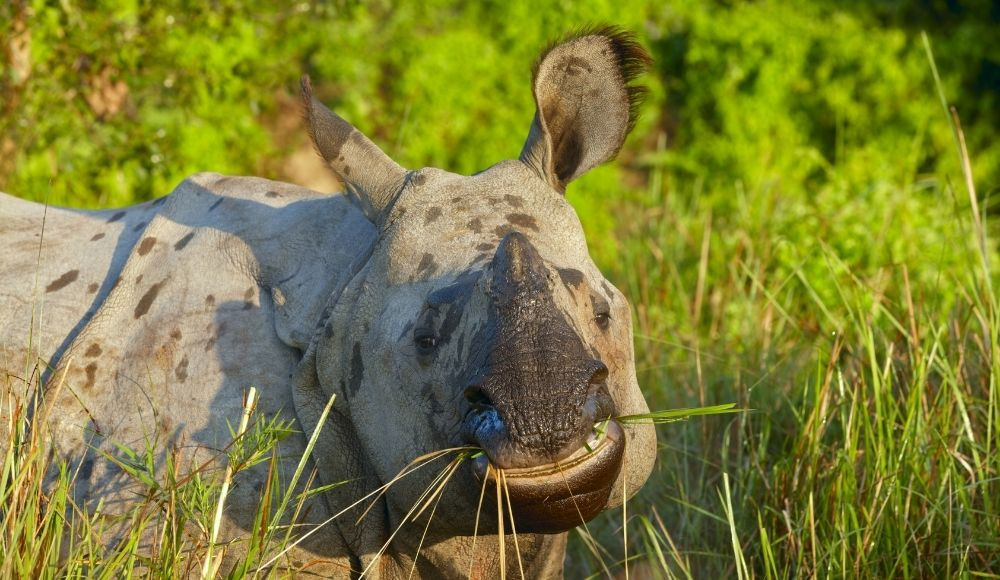
The primary concern of this national park is the safety of most endangered species, One-horned rhinos, Bengal tigers and Asian bull elephants. In addition to this, it is also safeguarding several other fauns such as four-horned antelope, python, gharials, crocodiles, squirrels, lizards and many more. Not only the flora and fauna alone, but it is also preserving two religious sites, Bikram Baba and Valmiki ashram. Also, it is the land of Tharu origin, so you can see the abundant Tharu lifestyles and culture inside and around the national park. So, this national park bears exemplary importance in all aspects whether it be the biodiversity or the distinct cultural norms and values.
Spring and Autumn are the perfect seasons to visit this national park. In Nepal spring falls in the month of March, April and May whereas Autumn collides in September, October and November. So, the months of March, April, May, September, October and November are the idle time for this national park visit.
As you already know, Autumn is perfect for all activities whether it be some daring adventure or a perplexing exploration. So, it's not shocking to know that this national park beams with glory in this particular period of time with an exquisite wide open ground view of vicious creatures. Also, the temperature is nice and cool with the clear fresh air offering unobscured visibility of the national park's domain.
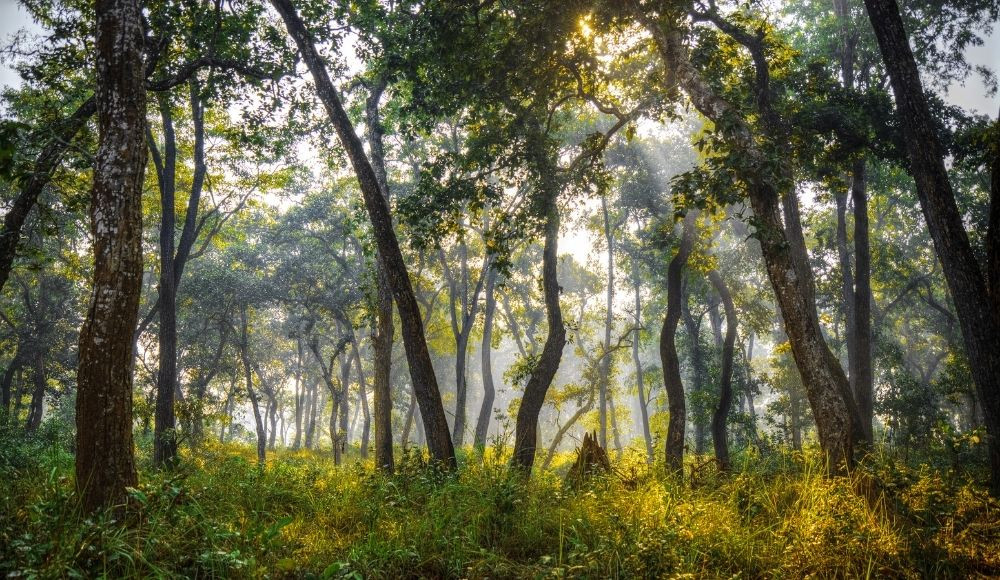
Similarly, Spring is another charisma, when you could observe a phase of nature reviving. This is the most favourable time for this national park visit except for the months of May. You could spot multiple wild beasts in this time as they are found close to the waterholes because of the extreme heat on the land. Also, If you are lucky enough you may spot a tiger during your jungle walk too.
Talking about the exceptional May, the temperature around this national park elevates up to 40℃ during this month. The sun blazes vigorously making it extremely hot. So, if you are best at enduring heat, then only visit this national park this month. Only the excess heat is the adverse factor here, otherwise, you could catch most faunas during this period.
The winter months in Nepal are December, January and February. These are not quite favourable months as the temperature drops to freezing cold. So, not much of a visit is done during these months. This national park also does not receive that many visitors during this season.
The initial December months are warm and chill gradually leading to shivering cold nights. The mornings are extremely foggy with the dewdrops swinging in the tree leaves and branches. The temperature drops up to 2℃ during this period. Also, it takes longer for the thick fog to clear up. So the days are usually dull and gloomy as not that much sunlight pierces through.
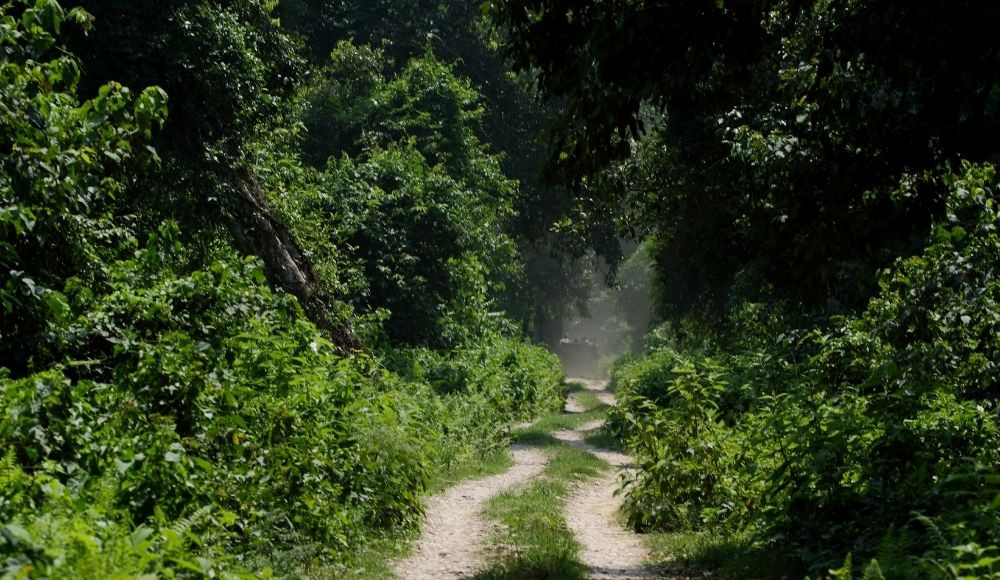
Coming to the wildlife, this is the hibernating time for those Lil creatures, as the environment changes drastically. The months of January were especially recorded with the lowest temperature so far. So, expecting much wildlife during this time may bestow you with utter disappointment.
The only advantage of this national park visit during harsh winter months is you could enjoy bird watching during this period. Reportedly about 160 Species of migrating birds are found dwelling around here in the winter months. They flew to this national park during autumn from the northern hemisphere. So, you could steal this deal if you get here during this period. Summing up, this season is definitely not the best time to visit this national park.
|
Months |
Min Temp |
Max temp |
Avg temp |
|
December |
9℃ |
28℃ |
18.5℃ |
|
January |
2℃ |
19℃ |
10.5℃ |
|
February |
3℃ |
22℃ |
12.5℃ |
|
Months |
Precipitation |
Humidity |
|
December |
6mm |
57% |
|
January |
9mm |
57% |
|
February |
13mm |
50% |
Spring is a colourful season with a vibrant atmosphere. Earlier in this season forests change their colour into rustic orange, red and yellow. I personally prefer this season as the wildered old leaves are replaced by bright green young leaves. The trails paved by the multicoloured dry leaves welcome you to the new beginning of the seasons. The vibes you receive during this season are spectacularly exceptional. And this is what makes spring the favourite among many. So, Spring in Chitwan national park is definitely the best period for exploring the diverse flora and fauna dispersed in this national park.
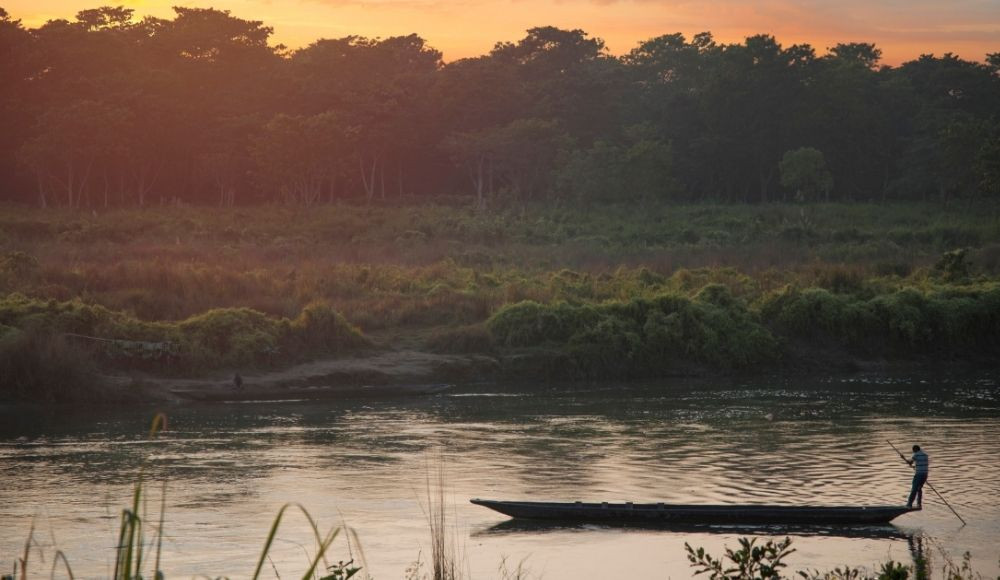
The months of March, April and May are the spring months here. The temperature ranges above 30℃ in bright daylight. So, it's pretty hot outside. You may be wondering how it could be more favourable then. Amusing right? It's because in this season the gradual increase in surrounding temperature forces the creepy creatures to get out of their hide hole. So you could grab this amazing opportunity to gaze at all the wild beings found in this national park.
Mainly this wildlife is spotted nearer to the water resource. They are seen lurking over the river bank quenching their thirst and waiting for their prey. The most often spotted is Somber deer, Hog deer, Chital, squirrels, monkeys, rhinos, gharials and crocodiles. You could see plenty of them near the Rapti river bank. Spotting different species of wildlife in the cool breeze of the lowland Terai will definitely furnish you with the adequate relaxation you are in quest of.
Unlike March and April, May is the hottest month leading to the monsoon season soon after. The beginning of this month is extremely hot while the end follows the pre-monsoon. Though it is the hottest, the humidity is high, so some visits are done during this month too but if you can't handle the high heat, you will freak out for sure. So even if it belongs to the decent season this month is not quite appropriate for all. Though with the precautions you could pay a visit during this time too.
|
Months |
Min Temp |
Max temp |
Avg temp |
|
March |
14℃ |
30℃ |
23℃ |
|
April |
18℃ |
32℃ |
25℃ |
|
May |
21℃ |
35℃ |
28℃ |
|
Months |
Precipitation |
Humidity |
|
March |
13mm |
34% |
|
April |
33mm |
30% |
|
May |
82mm |
44% |
The time of showering rain with partial thunderstorms, occasionally is the season of summer. June, July and August, these three months are the main summer season in Nepal which is the same for this national park too. Sometimes it extends up to early September too. It rains heavily and continuously during this time resulting in the threat of flood inside the national park. The temperature is pretty high in the broad sunlight which gets up to 32℃ in the months of June.
Particularly not much visit, fairly few is done during this time. The continuous pouring rain halts the visit even if someone tries. So, most of the visitors skip this season for this national park visit. Since there is an alluvial grassland inside the national park, parasitic leeches are seen hovering all over during this time. So, it would be a definite turn off for those who are afraid of this creature.
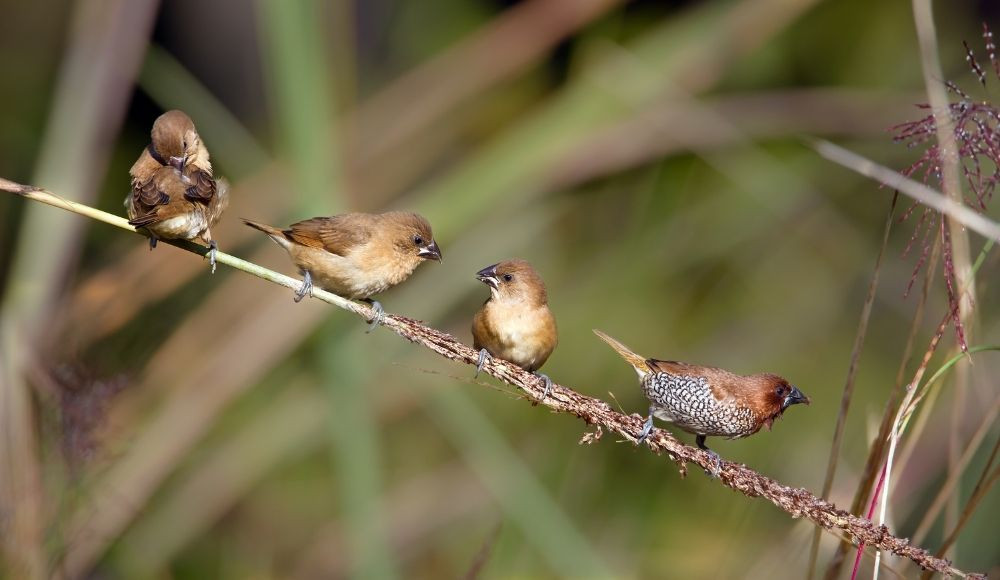
Besides its all drawbacks, there is one thing you could appreciate on the national park visit during this time. Which is, the sky gets clear after the rainfall and grants better visibility. You could gaze at the grasslands and the forests which look more lush and green. Some herbivores such as deer and chital are seen grazing in the grassland. Also, some migratory birds from the southern hemisphere are seen soaring in the forest which grants you birdwatching pleasure. This is the only deserving appreciation of this national park visit during this season. Counting all the pros and cons, this season isn't that good for this national park visit.
|
Months |
Min Temp |
Max temp |
Avg temp |
|
June |
22℃ |
32℃ |
27℃ |
|
July |
21℃ |
31℃ |
26℃ |
|
August |
22℃ |
31℃ |
26.5℃ |
|
Months |
Precipitation |
Humidity |
|
June |
231mm |
55% |
|
July |
644mm |
75% |
|
August |
499m |
76% |
Finding someone not liking this season is like searching for an apple in a sack of potatoes. Got the point right? Cause there is no one disliking this season. This season is practically the best season of all the seasons here in Nepal. The temperature, humidity, precipitation, and overall everything is just perfect during this season. And this national park attracts a large number of visitors during this particular time.
Light rainfall takes place in early September. Later the days become bright and warm. Most of the adventure activities are conducted during this time and you can participate in that too during your national park visit. So, not only getting nature's beauty is the only advantage here as you can also fulfil your adrenaline rush too.
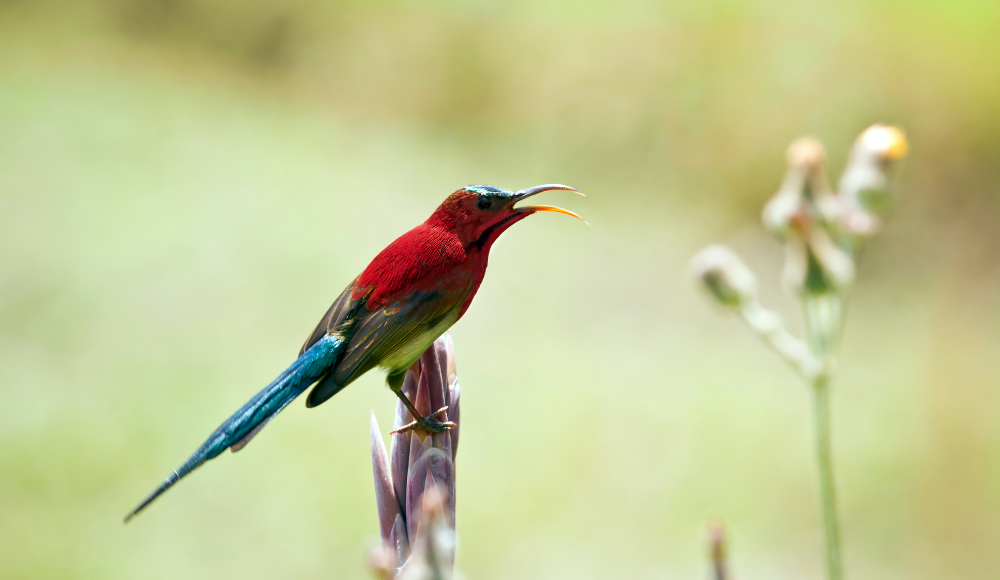
October and November are the festive months here in Nepal, as the main three Hindu festivals, Dashain, Tihar and Chaath fall during these months. It adds another dimension to the beauty of the national park, as you are likely to get a touch of nature, culture and geography altogether during this time.
Apart from this, most of the animals in the national park are spotted during these months. The forests and the grasslands are visibly thicker which is an aftereffect of the summer rainfall. The temperature starts to decline in late October and the sunlight gets dimmer which makes the perfect chase for the jungle walk. Also, the animals are seen leaping out of their holes to sunbathe and you could grab that opportunity to peek at those generous wild beauty. Moreover, the early morning fog and the mist, and the appearance of the wild beings within it make the national park visit even more intriguing during this time. So, it is indisputable to say that this is the most favourable time to visit this national park.
|
Months |
Min Temp |
Max temp |
Avg temp |
|
September |
19℃ |
30℃ |
24.5℃ |
|
October |
15℃ |
26℃ |
21.5℃ |
|
November |
10℃ |
24℃ |
17℃ |
|
Months |
Precipitation |
Humidity |
|
September |
296mm |
77% |
|
October |
74mm |
68% |
|
November |
5mm |
59% |
No such restricted area permit or any other special permits are required for this national park visit. You just need to have a national park permit to make an entry. This permit is readily available from the main entrance gate of the national park. So, there is no complex procedure to get a national park permit here. The cost ranges from RS 100 for Nepali citizens, Rs 1000 for SAARC nationals and Rs 2000 for foreigners.
|
Nationals |
Cost |
|
Nepali |
RS 100 |
|
SAARC |
RS 1000 |
|
Foreigners |
RS 2000 |
Just wandering around the national park aimlessly is obviously not what you desire during the national park visit. So, you could join some extra activities such as Canoe Ride, Tharu Cultural Show, Jungle walking, Jeep Safari, Bird Watching, visiting Elephant and Gharial Breeding Centre, and exploring Bis Hazari Taal and so on. A brief description of these activities is mentioned below.
Jungle Safari in Chitwan national park is done in two ways: Jungle walking and Jeep Safari. Jungle walking is the most favoured activity preferred by almost all visitors during the national park visit. Here you will fiddle in the jungle with a guide who knows the region well. You will trace the trails covered by him and follow accordingly. Walking into the vicious territory will definitely perk you up in some range. But after hearing the sweet melody of the great jungle singer aka Cuckoo, this fear will get substituted by the newfound excitement. You could observe the wildlife movement and their corresponding behavioural patterns relatively closer which is very fascinating. So, this jungle walking is something you should never miss if you ever get to this national park.
Another way of Chitwan wildlife exploration is this Jeep safari. Jeep Safari takes you through the possible trails of the jungle where the wilds are more likely to get spotted. Here the safari jeep will be hoodless allowing you to take the complete ecstasy of the jungle vibes. Most often animals like deer, monkeys, squirrels, chitals, rhinos and gharials are seen during this ride. The possibility of encountering the royal Bengal tiger is pretty slim here.
Related trip: Chitwan wildlife safari luxury tour.
Chitwan national park is well known for large species of birds. Reportedly 544 species of birds are found residing in this national park. So, you may have guessed how many colours you are getting in front of your eyes. Some of them are easily distinguishable with bright colours while some of them are total camouflage. A feeling of total satisfaction will wash you up after you catch the magnificent sight of these birds soaring in the flock. For bird watching, you need to walk through the jungle trails, because the noise of the vehicles will definitely scare them away.
Canoe riding in the Rapti river inside Chitwan national park is a phenomenal blend of thrill, excitement, relaxation and amusement. Not only will you be gliding into the handcrafted canoe but also gaze at the mesmerising Chitwan national park. You could admire the unparalleled beauty of this national park during this ride. Also, you could spot various bird species on the river banks. Additionally to this all, you will get a very close encounter with the endangered gharials and some marsh muggers. Getting them nearer to you is not something you want but if you don’t offend them in the first place, there is no harm they will cause.
Visit to Elephant and gharial breeding centres are more prioritised by zoologists (individuals more interested in the animals and their lifecycle). It's not like others won't pass by there, they will, but less keen to know about them. In the elephant breeding centre, you could watch the baby calves attempting to leap slowly and gradually which is quite satisfying to watch. Not only the baby ones you could see different-sized elephants here. Not only the breeding purpose but they are also kept here to prevent Poaching too. So, this breeding centre has multiple purposes. Also, the gharial breeding centre which is in the park headquarters Kasara grants you with similar experience. The only difference is, there you will see baby gharials.
Related read: Nepal wildlife safari luxury tour.
This is an amazing experience you could collect inside this national park. The Tharu community performs the dance with their folk songs on the upbeat of Jhyali. They demonstrate their art, artefacts, costumes and tradition through this. Their dance and songs are really very calming yet hypnotic, luring you to participate together in some unique moves.
Bishazari Taal and its associated lakes are the wetlands preserved under the Ramsar convention. It resides in the buffer zone of this national park. This lake is mainly famous for bird watching. More than 160 species of migratory birds come to this wetland every winter, unable to bear the extreme cold in the earth’s northern hemisphere. Not only birds, but you can also watch rhinos playing by the lakes. Also, You could watch the gharials and marsh muggers on this same lake. The peaceful tranquil lake surrounded by the greenery itself is alluring, on top of that, the presence of peculiar faunas makes it even more bewitching. And an exploration of this divine beauty during your national park trip is indeed an incredible thing to do.
Related read: Things to do in Nepal.Visiting the national park is somehow different from exploring some random places. Here, You will get a closeup view of the wild beings. So, It comes as “beauty with the beast” means astounding beauty posing some life-threatening risks too. So, you have to be extra careful and cautious during your visit to these wild beauties. Some of the tips and tricks you may require during this national park visit are listed below:
Don't wear bright-coloured clothes, try to wear neutrals.
Carry your own water no matter what.
Wear comfortable shoes in case you want to join the jungle walk.
Don't get away from the trails led by your guides.
Don't tease animals and don't disturb them.
As you are on the property which the wildlife call their homes. Here you are the one pressing a threat to wildlife not them. So, maintain a good distance for the safety of both yourself and the wild ones.
Don't make loud noises and uphold the peace and tranquillity of the park.
Learn the weather around the park before paying a visit and dress accordingly.
Follow the concepts of “ take only the memories and leave only the footprints” i.e don't litter the park.
Follow the national parks rule and regulations.
our first-hand Himalayan travel experience